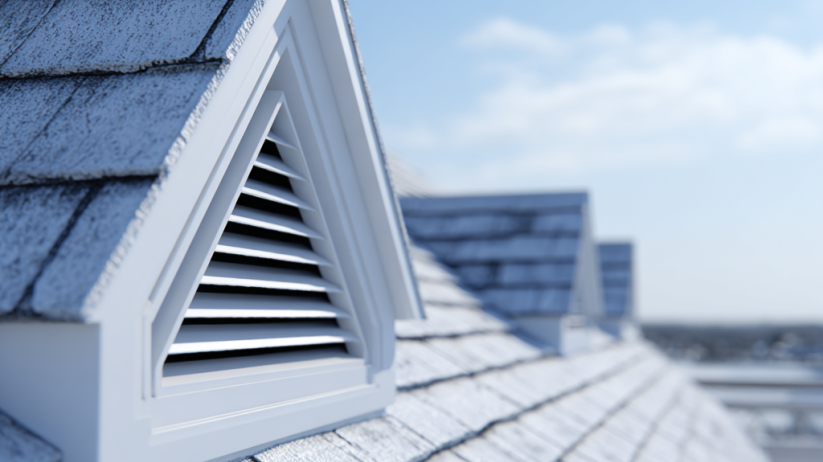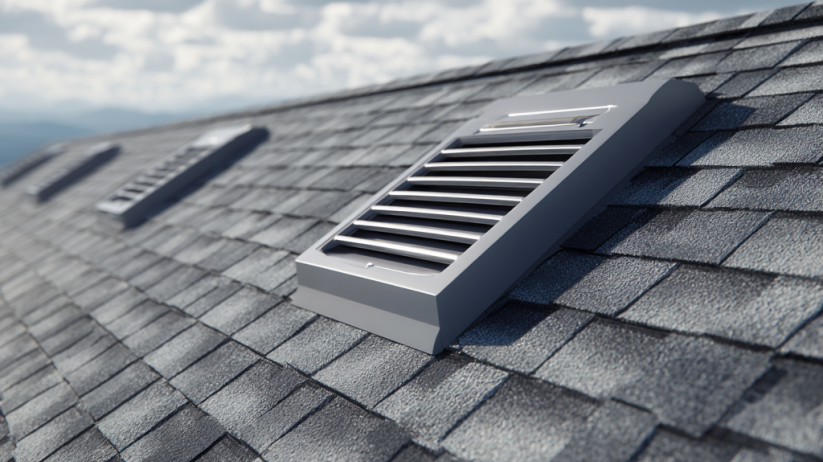Let’s be real. Most homeowners don’t think much about what’s going on in their attic—until something goes wrong. But in a place like San Diego, where the sun doesn’t take many days off, attic ventilation isn’t just a good idea—it’s a must. If your roof’s not breathing, your home’s probably sweating. And your energy bill? Probably higher than it should be.
At Guardian Roofs, we’ve spent the last three decades helping homeowners figure this out before their roof fails or their insulation turns into a mold trap. If you want your roof to last, your home to stay cool, and your energy bill to calm down, then you need to understand the real benefits of attic ventilation in San Diego’s climate.
We’re going to break it down for you in plain English—what it is, why it matters, and what you can do about it.
What You’ll Learn in This Post:
- Why attic ventilation is a big deal in Southern California
- The actual, money-saving benefits of getting it right
- What to expect before you upgrade your attic vents
- How we install systems that don’t just meet code—they actually work
Need someone to take a look? Guardian Roofs can help. Visit guardianroofs.com to get started.
Why Attic Ventilation Is a Big Deal in San Diego
What Is Attic Ventilation, Anyway?
It’s airflow—plain and simple. Ventilation allows fresh air to move in and hot, stale air to move out of your attic. A proper setup includes both intake vents (usually near your soffits) and exhaust vents (like ridge vents or attic fans).
When it’s working like it should, your attic stays cooler in the summer and drier year-round. That means fewer problems for your insulation, your HVAC system, and your roof.
What Makes San Diego Different?
We may not get snowstorms, but San Diego homes face a different kind of problem—relentless heat. Attics here regularly hit 140 degrees or more in the summer. That heat doesn’t just hang out up there—it seeps into your living space, makes your AC run longer, and breaks down your roofing materials faster than they should.
And don’t let the dry climate fool you. Moisture’s still an issue. Cooking, showers, laundry—all that steam has to go somewhere. It rises into your attic. Without a way to escape, it builds up, and now you’ve got mold and rot to worry about.
Don’t Forget the Building Code
California requires at least 1 square foot of attic ventilation for every 150 square feet of attic space. But codes are just the minimum. We design systems that do more than pass inspection—they actually work to protect your home.
What You Need to Know Before You Fix the Problem
Before you jump into a ventilation upgrade, here’s what we recommend you think about:
1. What Shape Is Your Roof In?
If your roof is 15 to 20 years old—or already leaking—it’s smart to handle ventilation during a re-roof. You’ll save on labor, and you’ll know everything was done right the first time.
2. What’s It Going to Cost?
In San Diego, most attic ventilation projects fall between $500 and $2,500. Sounds like a lot? Not when you compare it to energy savings, or worse—premature roof replacement. Get it done once, and done right.
3. What Kind of Roof Do You Have?
Different roofs need different vent systems. Tile roofs might need special low-profile vents. Asphalt shingle roofs usually work well with ridge and soffit vents. Flat roofs often need mechanical ventilation. We’ll tell you what makes sense for your setup.
4. Do You Need a Permit?
Some ventilation work in San Diego County requires a permit. We take care of that so you don’t have to guess.
5 Real Benefits of Roof Ventilation in San Diego
1. It Helps Keep Your Home Cooler
When your attic can vent out the heat, your upstairs rooms won’t feel like saunas in the summer. That means your AC won’t have to run all day to keep up.
2. It Lowers Your Energy Bill
Less attic heat means less load on your HVAC system. You could shave 10 to 15 percent off your cooling costs just by letting your attic breathe.
3. It Extends the Life of Your Roof
Too much trapped heat and moisture can cause shingles to curl, wood to rot, and adhesives to fail. Ventilation helps your roofing system last as long as it should.
4. It Improves Indoor Air Quality
Hot, damp air in the attic can create mold, mildew, and airborne junk that gets pulled into your ductwork. A ventilated attic = cleaner air in your home.
5. It Protects Your Warranty
Manufacturers like Owens Corning and GAF require proper attic ventilation to honor their warranties. If your roof isn’t vented correctly, they can legally deny your claim—even if the material fails.
Deep Dive: Materials, Energy Savings, and What We Actually Do
What Type of Vent Works Best for Your Roof?
| Roof Type | Ventilation Approach |
| Asphalt Shingles | Ridge vents with soffit intake |
| Tile Roofs | Low-profile tile-specific vents |
| Flat Roofs | Powered fans or box vents |
| Cedar or Slate | Breathable underlayment + targeted venting |
Energy Efficiency That Pays You Back
According to the Department of Energy, homes with balanced attic ventilation can cut energy use by up to 20% a year. And in San Diego, that means less time running your AC and more money staying in your pocket.
How Guardian Roofs Gets It Right
We don’t guess. We measure. Our team looks at your attic structure, roofing material, insulation levels, and current airflow. Then we design a system that fits your home—and your budget.
We’re not just any roofer. We’re certified by Owens Corning and GAF. That means you’re not just getting vents—you’re getting peace of mind, a roof that performs, and warranties that stay intact.
Common Questions About Attic Ventilation for San Diego Homes
Do San Diego homes really need attic ventilation?
Yes, San Diego homes absolutely need attic ventilation. Even in a dry climate, heat buildup and indoor humidity can damage your roof and raise your energy bills.
How can I tell if my attic has poor ventilation?
You can tell if your attic has poor ventilation if your upstairs rooms are hot, your AC runs constantly, you see mold or moisture in the attic, or your shingles look like they’re curling or cracking.
Can I add roof ventilation without replacing the roof?
Yes, you can add roof ventilation without replacing the entire roof—as long as the roof is in good condition. If it’s older or showing signs of wear, you might want to handle both at once.
How much does attic ventilation cost in San Diego?
The cost of attic ventilation in San Diego typically ranges from $500 to $2,500, depending on your home’s size, your roofing material, and the type of vents needed.
Will adding vents change the look of my roof?
Adding vents will not significantly change the look of your roof. We install low-profile or roof-matching vents that blend in with your existing material, especially for tile and flat roofs.
Can poor attic ventilation void my roof warranty?
Yes, poor attic ventilation can void your roof warranty. Most major manufacturers require proper airflow to maintain warranty coverage.
Bottom Line: Don’t Ignore Your Attic
Your roof can’t protect your home if your attic is holding in heat and moisture. And in San Diego, where the sun doesn’t mess around, attic ventilation is just as important as your roofing material itself. The roof ventilation benefits are real—lower energy bills, longer roof life, and better air quality.
At Guardian Roofs, we’ve been fixing ventilation issues across Southern California for over 36 years. We’re certified, highly rated, and committed to doing the job right the first time.
Ready to stop guessing and start fixing the problem? Schedule your attic ventilation estimate today.


